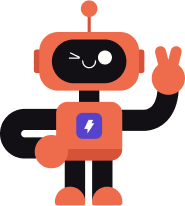In the dynamic landscape of artificial intelligence, OpenAI’s ChatGPT has emerged as a groundbreaking language model, reshaping how we approach content generation. As this powerful tool becomes increasingly integrated into various applications, questions about its potential to inadvertently produce content resembling existing materials have gained prominence. This exploration delves deep into the intricacies of ChatGPT, with a keen focus on its approach to originality and the ethical considerations surrounding potential plagiarism.
Table of Contents
ToggleUnderstanding ChatGPT
ChatGPT: A Brief Overview
ChatGPT stands as a testament to the remarkable advancements in natural language processing within the GPT (Generative Pre-trained Transformer) family, a creation of OpenAI. Trained on diverse datasets, this language model harnesses the power of predictive text mechanisms, allowing it to anticipate the next word in a sequence based on its extensive training. By comprehending human language intricacies, ChatGPT has become a transformative force in the realm of AI-driven content generation.
The mechanism behind ChatGPT’s operation lies in its ability to understand and generate text that mirrors human language nuances. The model, with its predictive prowess, not only responds coherently to user prompts but also showcases a remarkable grasp of context and relevance. This amalgamation of learned patterns from extensive training datasets empowers ChatGPT to generate content that is not just accurate but also contextually rich, revolutionizing the landscape of AI-generated language.
Analyzing ChatGPT’s Content Generation
The heart of ChatGPT’s functionality lies in its ability to generate text based on prompts. Users input text, and the model responds by creating coherent and contextually relevant content. The magic happens as ChatGPT combines learned patterns from its training data, showcasing a remarkable grasp of language nuances.
The Mechanism Behind ChatGPT
To comprehend ChatGPT’s content generation, it’s crucial to understand the mechanism at play. Trained on an extensive dataset, the model predicts the next word in a sequence, effectively creating responses that emulate human-like language patterns. The dynamic interplay of input and output forms the basis of ChatGPT’s language generation prowess.
Investigating ChatGPT’s Plagiarism Potential
Possible Plagiarism Concerns with ChatGPT
While ChatGPT is not designed for intentional plagiarism, concerns arise from the vastness of its training data, which includes information gleaned from the internet. The sheer volume and diversity of data ingested introduce the possibility of unintentional similarities with existing content. As ChatGPT responds to prompts based on learned patterns, there is a nuanced interplay between creativity and unintentional resemblances, prompting the need for a closer examination of potential plagiarism concerns.
In navigating the landscape of AI technology, the question of plagiarism extends beyond ChatGPT. It prompts a reflection on the inherent challenges of achieving absolute originality in AI-generated content. The model’s capacity to learn and adapt from extensive datasets poses both opportunities and challenges, necessitating a balanced approach to harnessing its capabilities while addressing concerns related to unintentional similarities with existing materials.
In evaluating the originality of AI outputs, ethical considerations come to the forefront. OpenAI, recognizing the significance of ethical AI use, has implemented safety guidelines within ChatGPT to minimize biased behavior and prevent the generation of inappropriate content. However, the challenge lies in striking a delicate balance—allowing for creative output while minimizing unintended resemblances to existing content.
The Question of Plagiarism in AI Technology
Delving into the broader landscape of AI technology, the question of plagiarism extends beyond ChatGPT. It necessitates a nuanced understanding of the distinction between intentional copying and the inherent challenges of achieving absolute originality in AI-generated content.
Evaluating Originality in AI Outputs
Ethical considerations play a pivotal role in assessing the originality of AI outputs. OpenAI, recognizing the importance of ethical AI use, has implemented safety guidelines to minimize biased behavior and prevent the generation of inappropriate content.
Measures to Prevent Plagiarism in ChatGPT
OpenAI actively addresses plagiarism concerns by refining ChatGPT based on user feedback. Continuous improvements aim to strike a delicate balance, allowing for creative output while minimizing unintended similarities with existing content. User guidance plays a pivotal role in shaping ChatGPT’s content generation. By providing specific and clear instructions in prompts, users can influence the model to align more closely with their expectations, fostering a collaborative effort to reduce the risk of unintended resemblances.
The ongoing evolution of AI ethics will play a pivotal role in shaping how AI models, including ChatGPT, address plagiarism concerns. Ongoing research, discussions, and collaborations within the AI community will contribute to the development of ethical guidelines that address the nuances of content generation and originality.
Avoid Plagiarism With Straico
If you’re interested in an easy and hassle free way to avoid plagiarism, be sure to use this template by Straico which can easily modify AI Content and help you avoid AI Detectors. In addition to this Straico uses multiple LLMs which helps in plagiarism prevention because AI detectors seem to be more prone to detect from a particular model
Straico is a comprehensive AI platform that seamlessly integrates content and image generation capabilities. An ideal solution for individuals and businesses eager to boost their creativity and productivity levels.
The Role of User Guidance
Users play a crucial role in guiding ChatGPT’s content generation. By providing specific and clear instructions in prompts, users can influence the model to produce output that aligns more closely with their expectations. This user guidance becomes a collaborative effort to shape the narrative and reduce the risk of unintended resemblances.
The Role of ChatGPT in Plagiarism Detection
ChatGPT as a Guide in Plagiarism Detection
While ChatGPT is not a dedicated plagiarism detection tool, users can leverage its capabilities to guide content generation in a way that minimizes unintentional resemblances to existing materials. Understanding the model’s strengths and limitations is key to this process.
The Need for Dedicated Plagiarism Detection Tools
In the realm of content creation, the need for dedicated plagiarism detection tools remains paramount. While ChatGPT aids in creative writing, specialized tools are essential to ensure the originality of content, especially in academic and professional settings where plagiarism is a critical concern.
The Future of AI and Plagiarism Issues
The Evolution of AI Ethics
The evolution of AI ethics will play a pivotal role in shaping how AI models address plagiarism concerns. Ongoing research, discussions, and collaborations within the AI community will contribute to the development of ethical guidelines that address the nuances of content generation and originality.
Advancements in Plagiarism Prevention
Future advancements in AI will likely lead to more sophisticated plagiarism prevention mechanisms. Incorporating machine learning techniques specifically designed to identify and prevent unintentional similarities with existing content will enhance the originality of AI-generated outputs.
The Collaborative Future of AI and Creativity
The collaborative future of AI and creativity involves not only technological advancements but also a shared responsibility among developers, users, and the wider community. It requires a collective effort to strike a balance between innovation and ethical content generation, ensuring that AI tools contribute positively to the creative landscape.
Conclusion
In conclusion, the exploration of ChatGPT and plagiarism sheds light on the intricacies of achieving originality in AI-generated content. While the model itself avoids intentional plagiarism, the inherent challenges of training on vast datasets introduce the possibility of unintentional similarities. OpenAI’s commitment to ethical guidelines and continuous improvement reflects a conscientious approach to addressing these concerns.
Navigating the future of AI requires a nuanced understanding of the interplay between technology and originality. Responsible development practices, user education, and advancements in AI ethics will collectively contribute to ensuring that language models like ChatGPT positively impact the creative landscape without compromising on the importance of original content. Tools like Straico use OpenAI and GPT models due to their ability to avoid plagiarism.
This comprehensive exploration underscores the need for ongoing dialogue and collaboration within the AI community, academia, and industry to establish robust frameworks that balance innovation with ethical content generation. As we look to the future, the responsible use of AI models will be paramount in harnessing their full potential while upholding the principles of creativity and originality.




